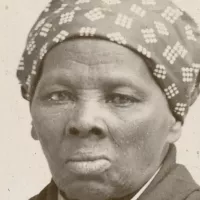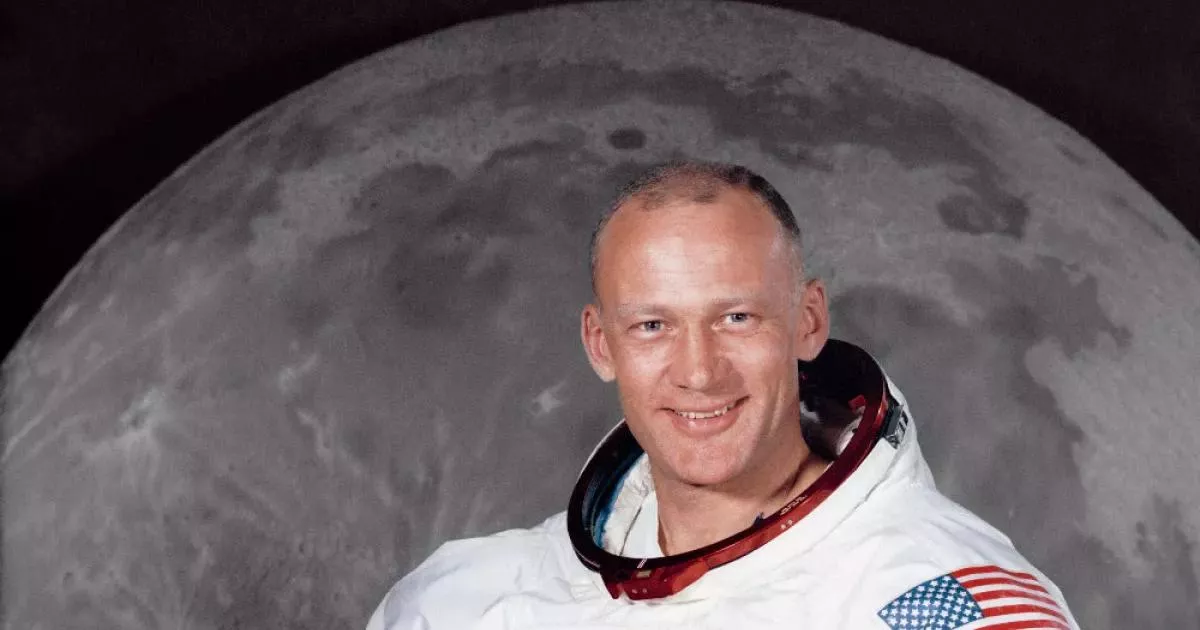Buzz Aldrin is an American former astronaut, engineer, and fighter pilot, best known as the second person to walk on the Moon during the Apollo 11 mission in 1969. As the Lunar Module Eagle pilot, he followed commander Neil Armstrong onto the lunar surface. Prior to Apollo 11, Aldrin piloted the Gemini 12 mission in 1966, during which he performed three spacewalks. With the passing of Neil Armstrong and Michael Collins, Aldrin is the last surviving member of the Apollo 11 crew. His contributions to space exploration have cemented his place as a pivotal figure in scientific and historical achievements.
1919: Father's assignment at McCook Field
From 1919, Aldrin's father was the assistant commandant of the Army's test pilot school at McCook Field, Ohio.
1922: Father's assignment at McCook Field
Until 1922, Aldrin's father was the assistant commandant of the Army's test pilot school at McCook Field, Ohio.
1928: Father leaves the Army
In 1928, Aldrin's father left the Army and became an executive at Standard Oil.
January 20, 1930: Birth of Edwin Eugene Aldrin Jr.
On January 20, 1930, Edwin Eugene Aldrin Jr. was born at Mountainside Hospital in Glen Ridge, New Jersey, to parents Edwin Eugene Aldrin Sr. and Marion Aldrin.
January 20, 1930: Birth of Buzz Aldrin
On January 20, 1930, Edwin Eugene Aldrin Jr., later known as Buzz Aldrin, was born. He would become an American astronaut, engineer, and fighter pilot.
1946: Attended Severn School
In 1946, Aldrin attended Severn School, a preparatory school for the Naval Academy, but ultimately chose to pursue a career in the Air Force.
1947: Entered West Point
In 1947, Aldrin entered the United States Military Academy at West Point.
1947: Separate service United States Air Force
In 1947, the United States Air Force became a separate service while Aldrin was at West Point.
1950: West Point Trip to Japan and Philippines
In 1950, Aldrin travelled with a group of West Point cadets to Japan and the Philippines to study military government policies.
June 5, 1951: Graduation from West Point
On June 5, 1951, Aldrin graduated third in the class of 1951 with a Bachelor of Science degree in mechanical engineering from West Point.
1951: Graduation from West Point
In 1951, Aldrin graduated third in his class from the United States Military Academy at West Point with a degree in mechanical engineering.
December 1952: Assignment to 16th Fighter-Interceptor Squadron
In December 1952, Aldrin was assigned to the 16th Fighter-Interceptor Squadron, part of the 51st Fighter-Interceptor Wing, based at Suwon Air Base during the Korean War.
May 14, 1953: First MiG-15 shot down
On May 14, 1953, Aldrin shot down his first MiG-15 fighter while flying south of the Yalu River during the Korean War.
June 4, 1953: Second aerial victory
On June 4, 1953, Aldrin achieved his second aerial victory by shooting down a MiG fighter during an attack on an airbase in North Korea.
June 8, 1953: Life Magazine featured Aldrin's gun camera footage
On June 8, 1953, Life magazine featured gun camera footage taken by Aldrin of a pilot ejecting from his damaged aircraft.
December 1953: End of Korean tour and assignment at Nellis
In December 1953, Aldrin's year-long tour in Korea ended, and he was assigned as an aerial gunnery instructor at Nellis Air Force Base.
December 1954: Aide-de-camp to Brigadier General Zimmerman
In December 1954, Aldrin became an aide-de-camp to Brigadier General Don Z. Zimmerman, the Dean of Faculty at the United States Air Force Academy.
December 29, 1954: First Marriage to Joan Archer
On December 29, 1954, Buzz Aldrin married Joan Archer, a Rutgers University and Columbia University alumna.
1955: Graduation from Squadron Officer School
In 1955, Aldrin graduated from the Squadron Officer School at Maxwell Air Force Base in Alabama.
1956: Flying F-100 Super Sabres in West Germany
From 1956, Aldrin flew F-100 Super Sabres equipped with nuclear weapons as a flight commander in West Germany.
1959: Enrolled at MIT
In 1959, Aldrin enrolled as a graduate student at the Massachusetts Institute of Technology through the Air Force Institute of Technology.
1959: Flying F-100 Super Sabres in West Germany
Until 1959, Aldrin flew F-100 Super Sabres equipped with nuclear weapons as a flight commander in West Germany.
1962: Rejected from Astronaut Group 2
In 1962, Aldrin's application to join NASA's Astronaut Group 2 was rejected because he was not a test pilot.
January 1963: Earned Sc.D. degree in astronautics
In January 1963, Aldrin earned a Sc.D. degree in astronautics from MIT with his thesis on Line-of-Sight Guidance Techniques for Manned Orbital Rendezvous.
May 15, 1963: NASA announced another round of selections
On May 15, 1963, NASA announced another round of astronaut selections, requiring either test pilot experience or 1,000 hours of jet flying time.
October 18, 1963: Selection for NASA's Astronaut Group 3
On October 18, 1963, Aldrin was selected as one of the fourteen members of NASA's Astronaut Group 3, making him the first astronaut with a doctoral degree.
1964: Charles Duke wrote master's degree at MIT
In 1964, Charles Duke, another USAF officer, wrote his master's degree at MIT under the supervision of Laurence R. Young.
February 28, 1966: Death of Gemini 9 crew
On February 28, 1966, the Gemini 9 prime crew, Elliot See and Charles Bassett, died in an air crash, leading to Aldrin being moved up one mission to backup for Gemini 9.
June 17, 1966: Designated prime crew for Gemini 12
On June 17, 1966, Jim Lovell and Buzz Aldrin were designated as the prime crew for Gemini 12, with Gordon Cooper and Gene Cernan as their backups.
November 11, 1966: Launch of Gemini 12
On November 11, 1966, Gemini 12 was launched from Launch Complex 19 at Cape Canaveral. Aldrin helped Lovell to rendezvous manually using a sextant and rendezvous charts he helped create.
November 12, 1966: Solar eclipse viewed from Gemini 12
On November 12, 1966, Lovell and Aldrin photographed the solar eclipse over South America through the spacecraft windows during the Gemini 12 mission.
1966: NASA Exceptional Service Medal
During a 1966 ceremony marking the end of the Gemini program, Aldrin was awarded the NASA Exceptional Service Medal by President Johnson at LBJ Ranch.
1966: First space flight on Gemini 12
In 1966, Aldrin's first space flight was on Gemini 12, during which he spent over five hours on extravehicular activity.
1966: Pilot of Gemini 12 mission
In 1966, Buzz Aldrin served as the pilot of the Gemini 12 mission, during which he performed three spacewalks.
November 20, 1967: Assignment to Apollo 9 Backup Crew
On November 20, 1967, Lovell and Aldrin were assigned as the backup crew for Apollo 9, with Neil Armstrong as commander, Lovell as command module pilot (CMP), and Aldrin as lunar module pilot (LMP).
May 1968: Mother's Suicide
In May 1968, Aldrin's mother committed suicide, leading to Aldrin experiencing guilt and contributing to his later struggles with depression.
July 21, 1969: Walking on the Moon
On July 21, 1969, Aldrin set foot on the Moon at 03:15:16 UTC, nineteen minutes after Armstrong. He also held a private communion ceremony, the first food and liquid consumed there.
September 16, 1969: Astronauts Address Joint Session of Congress
On September 16, 1969, the Apollo 11 astronauts addressed a joint session of Congress, expressing gratitude for past support and urging continued funding for space exploration.
November 5, 1969: Return to the US After World Tour
On November 5, 1969, the Apollo 11 crew returned to the United States, concluding a 38-day world tour that included visits to 22 foreign countries and meetings with numerous world leaders.
1969: Air Force Distinguished Service Medal Awarded
In 1969, Aldrin was awarded the Air Force Distinguished Service Medal (DSM) for his role as Lunar Module pilot on Apollo 11.
1969: Awarded the Collier Trophy and General Thomas D. White USAF Space Trophy
In 1969, Buzz Aldrin and the Apollo 11 crew were awarded the Collier Trophy. Additionally, they received the 1969 General Thomas D. White USAF Space Trophy.
1969: Presidential Medal of Freedom
In 1969, Buzz Aldrin received the Presidential Medal of Freedom.
1969: Apollo 11 mission
In 1969, Buzz Aldrin was the Lunar Module Eagle pilot on the Apollo 11 mission. He was the second person to walk on the Moon, after Neil Armstrong.
October 1970: Tour of NASA Space Centers with Soviet Cosmonauts
In October 1970, after the Apollo 11 mission, Aldrin joined Soviet cosmonauts Andriyan Nikolayev and Vitaly Sevastyanov on their tour of the NASA space centers.
1970: Aldrin Reflects on Communion on the Moon
In 1970, Aldrin reflected on his religious ceremony on the Moon during the Apollo 11 mission. He commented that the first liquid and food consumed on the Moon were communion elements.
1970: NASA Distinguished Service Medal Awarded
In 1970, Aldrin was awarded the NASA Distinguished Service Medal for the Apollo 11 mission.
1970: Dr. Robert H. Goddard Memorial Trophy, Harmon Trophy, and Hubbard Medal
In 1970, Buzz Aldrin and the Apollo 11 crew received several awards, including the National Space Club's Dr. Robert H. Goddard Memorial Trophy for their spaceflight achievement. They also received the international Harmon Trophy for aviators, conferred by Vice President Spiro Agnew in 1971, and the Hubbard Medal of the National Geographic Society, also in 1970.
July 1, 1971: Aldrin Returns to the Air Force
On July 1, 1971, with the Apollo program concluding and limited prospects at NASA, Aldrin, then a colonel, decided to return to the Air Force.
1971: Leaving NASA
In 1971, Aldrin left NASA and became Commandant of the U.S. Air Force Test Pilot School.
1971: Received the Harmon Trophy
In 1971, Vice President Spiro Agnew conferred the international Harmon Trophy for aviators to Buzz Aldrin and the Apollo 11 crew.
February 1972: USAF Aerospace Research Pilot School Renamed
In February 1972, General George S. Brown informed Aldrin that the USAF Aerospace Research Pilot School was being renamed the USAF Test Pilot School and astronaut training was being dropped, signaling a decline in the Air Force's space interests.
March 1, 1972: Aldrin's Retirement from the Air Force
On March 1, 1972, Aldrin retired from the Air Force as a colonel after 21 years of service, with his father and General Jimmy Doolittle attending his retirement ceremony.
1972: Retirement from the Air Force
In 1972, Aldrin retired from the Air Force after 21 years of service.
1972: Oak Leaf Cluster Awarded
In 1972, Aldrin was awarded an oak leaf cluster in lieu of a second DSM for his roles in the Korean War and in the space program, and the Legion of Merit for his roles in the Gemini and Apollo programs.
December 28, 1974: Death of Aldrin's Father
On December 28, 1974, Aldrin's father passed away due to complications from a heart attack.
1974: Filed for divorce from Joan Archer
In 1974, Buzz Aldrin filed for divorce from his first wife, Joan Archer.
December 31, 1975: Second Marriage to Beverly Van Zile
On December 31, 1975, Buzz Aldrin married his second wife, Beverly Van Zile.
1976: Return to Earth TV Movie
In 1976, a TV movie version of Aldrin's book Return to Earth was made, in which Stefanie Powers portrayed Marianne, a woman with whom Aldrin had an affair.
October 1978: Aldrin Quits Drinking for Good
In October 1978, Aldrin successfully quit drinking after struggling with alcoholism for several years. During this period, he also attempted to help others with drinking problems.
1978: Became a teetotaler
Buzz Aldrin has been a teetotaler since 1978.
1978: Divorced Beverly Van Zile
In 1978, Buzz Aldrin divorced his second wife, Beverly Van Zile.
1981: Death of William Holden
In 1981, Aldrin was saddened by the alcohol-related death of actor William Holden, whom Aldrin had tried to help with his drinking problems.
1982: Induction into International Space Hall of Fame
In 1982, Aldrin was one of ten Gemini astronauts inducted into the International Space Hall of Fame.
1985: Joins University of North Dakota
In 1985, Aldrin joined the University of North Dakota's (UND) College of Aerospace Sciences and helped develop its Space Studies program. He also brought David Webb from NASA to serve as the department's first chair.
1985: Aldrin Cycler Proposed
In 1985, Aldrin proposed a special spacecraft trajectory now known as the Aldrin cycler, which offers reduced cost of repeated travel to Mars by using less propellant.
1985: Residence in Los Angeles area
Since 1985, Buzz Aldrin has primarily resided in the Los Angeles area, including Beverly Hills and Laguna Beach.
February 14, 1988: Third Marriage to Lois Driggs Cannon
On February 14, 1988, Buzz Aldrin married his third wife, Lois Driggs Cannon.
1988: Legal name change to Buzz
In 1988, Edwin Eugene Aldrin Jr. legally changed his first name to Buzz, a nickname derived from his sister's mispronunciation of "brother" as "buzzer".
1988: Apollo 11 Followed by STS-26
In 1988, STS-26 became the next American space mission, after Apollo 11, made up entirely of astronauts who had already flown in space, making it the first since Apollo 10.
1993: Induction into U.S. Astronaut Hall of Fame
In 1993, Aldrin was inducted into the U.S. Astronaut Hall of Fame.
1996: Founded Starcraft Boosters, Inc.
In 1996, Aldrin founded Starcraft Boosters, Inc. (SBI) to design reusable rocket launchers.
1998: Visit to the North Pole
In 1998, Aldrin traveled to the North Pole.
1999: Langley Gold Medal Award
In 1999, Buzz Aldrin and the Apollo 11 crew received the Smithsonian Institution's Langley Gold Medal for aviation, presented by Vice President Al Gore. Following the ceremony, the crew visited the White House and gifted President Bill Clinton with an encased Moon rock.
2000: Induction into National Aviation Hall of Fame
In 2000, Aldrin was inducted into the National Aviation Hall of Fame.
2001: Appointment to the Commission on the Future of the United States Aerospace Industry
In 2001, Buzz Aldrin was appointed by President George W. Bush to serve on the Commission on the Future of the United States Aerospace Industry.
September 9, 2002: Confrontation with Bart Sibrel
On September 9, 2002, Aldrin, at 72 years old, was confronted by Moon landing conspiracy theorist Bart Sibrel, who demanded he swear on a Bible that the Moon landings were not faked, leading Aldrin to punch Sibrel in the jaw. No charges were pressed against Aldrin.
December 2003: Criticism of NASA Objectives
In December 2003, Aldrin published an opinion piece in The New York Times criticizing NASA's objectives, particularly its spacecraft development and the goal of sending astronauts back to the Moon.
2003: Humanitarian Award from Variety, the Children's Charity
In 2003, Buzz Aldrin received the Humanitarian Award from Variety, the Children's Charity, in recognition of his understanding, empathy, and devotion to mankind.
2004: Rally Appearance for George W. Bush
In 2004, Buzz Aldrin appeared at a rally for George W. Bush, demonstrating his active support for the Republican Party.
2005: UFO Sighting Claim in Documentary
In 2005, while being interviewed for a Science Channel documentary titled First on the Moon: The Untold Story, Aldrin mentioned that the Apollo 11 crew had seen an unidentified flying object (UFO). The documentary makers omitted the crew's conclusion that they likely saw one of the four detached spacecraft adapter panels from the upper stage of the Saturn V rocket.
2006: General James E. Hill Lifetime Space Achievement Award
In 2006, Buzz Aldrin was awarded the Space Foundation's highest honor, the General James E. Hill Lifetime Space Achievement Award.
August 15, 2007: Howard Stern Interview
On August 15, 2007, Aldrin appeared on The Howard Stern Show and clarified the supposed UFO sighting during the Apollo 11 mission, stating that it was likely a detached panel from the spacecraft and that his words had been taken out of context. He also requested that the Science Channel make a correction.
2007: Face-lift Confirmation
In 2007, Buzz Aldrin confirmed to Time magazine that he had recently undergone a face-lift, humorously attributing it to the effects of g-forces experienced in space.
2008: Induction into New Jersey Hall of Fame
In 2008, Aldrin was inducted into the New Jersey Hall of Fame.
2008: Campaigning for Paul Rancatore
In 2008, Buzz Aldrin campaigned for Paul Rancatore in Florida, continuing his support of Republican candidates.
2009: Publication of "Magnificent Desolation"
In 2009, Aldrin's autobiography "Magnificent Desolation" was published, detailing his struggles with depression and alcoholism after leaving NASA.
2009: Magnificent Desolation Publication
In 2009, Aldrin's autobiography, Magnificent Desolation, was published, which recounted his struggles with clinical depression and alcoholism after leaving NASA.
2009: Aldrin's Reflections on Communion
In his 2009 book, Aldrin reflected on his decision to celebrate communion on the Moon during the Apollo 11 mission, expressing that perhaps he would not choose to do it again, given its Christian nature in a mission for all mankind.
2011: New Frontier Congressional Gold Medal
In 2011, the Apollo 11 crew, including Buzz Aldrin, was awarded the New Frontier Congressional Gold Medal in the Capitol Rotunda. NASA administrator Charles Bolden acknowledged their pioneering role in space exploration during the ceremony.
December 2012: Divorce from Lois Driggs Cannon Finalized
In December 2012, Buzz Aldrin's divorce from his third wife, Lois Driggs Cannon, was finalized.
2012: Mourning the death of Neil Armstrong
Following the 2012 death of his Apollo 11 colleague Neil Armstrong, Aldrin expressed his sadness at the passing of a true American hero.
2012: Third divorce
In 2012, Buzz Aldrin had his third divorce. Following this, in 2014, he sold his Westwood Condominium.
2012: Death of Neil Armstrong
In 2012, Neil Armstrong, the commander of the Apollo 11 mission, passed away.
June 2013: Support for Human Mission to Mars
In a June 2013 opinion piece in The New York Times, Aldrin supported a human mission to Mars, viewing the Moon as a point of departure for humankind to homestead Mars.
2014: Campaigning for Mead Treadwell
In 2014, Buzz Aldrin campaigned for Mead Treadwell in Alaska, further demonstrating his involvement in Republican Party politics.
2014: Sale of Westwood Condominium
In 2014, Buzz Aldrin sold his Westwood condominium after his divorce in 2012.
2015: Chancellor of the International Space University
In 2015, Buzz Aldrin was named the Chancellor of the International Space University.
December 2016: Illness and Evacuation from Antarctica
In December 2016, while visiting the Amundsen–Scott South Pole Station in Antarctica, Aldrin fell ill and had to be evacuated to Christchurch, New Zealand. At 86 years of age, his visit made him the oldest person to reach the South Pole.
2016: Buzz Aldrin Middle School Renaming
In 2016, Buzz Aldrin's hometown middle school in Montclair, New Jersey, was renamed Buzz Aldrin Middle School in his honor.
2018: Campaigning for Dan Crenshaw
In 2018, Buzz Aldrin campaigned for Dan Crenshaw in Texas, showcasing his continued support for Republican candidates.
2018: Legal Dispute with Children and Business Manager
In 2018, Buzz Aldrin was involved in a legal dispute with his children Andrew and Janice and former business manager Christina Korp over claims of mental impairment. His children sought legal guardianship to control his finances.
March 2019: Lawsuit Dropped, Guardianship Petition Withdrawn
In March 2019, Buzz Aldrin dropped his lawsuit against his children and former business manager, and his children withdrew their petition for legal guardianship.
July 20, 2019: 50th Anniversary of Moon Landing
Following the death of Neil Armstrong, Aldrin had hoped that on July 20, 2019, Neil, Mike, and himself would be standing together to commemorate the 50th Anniversary of their moon landing.
2019: Guest at the State of the Union Address
In 2019, Buzz Aldrin attended the State of the Union Address as a guest of President Donald Trump, highlighting his political affiliations.
2019: Stephen Hawking Medal for Science Communication
In 2019, Buzz Aldrin was awarded the Starmus Festival's Stephen Hawking Medal for Science Communication for Lifetime Achievement.
2021: Death of Michael Collins
In 2021, Michael Collins, the pilot of the Apollo 11 mission, passed away.
2022: Family Update
As of 2022, Buzz Aldrin had one grandson, Jeffrey Schuss, and three great-grandsons and one great-granddaughter.
January 20, 2023: Fourth Marriage to Anca Faur
On January 20, 2023, his 93rd birthday, Buzz Aldrin announced his fourth marriage to his 63-year-old companion, Anca Faur.
May 5, 2023: Honorary Promotion to Brigadier General
On May 5, 2023, Buzz Aldrin received an honorary promotion to the rank of brigadier general in the United States Air Force and was made an honorary Space Force guardian.
2024: Endorsement of Donald Trump in 2024 presidential election
In 2024, Buzz Aldrin endorsed Donald Trump for president, citing Trump's promotion of space exploration policy. Aldrin stated he believes the nation is best served by voting for Donald J. Trump.
August 7, 2025: Oldest Living Former Astronaut
Following the death of Jim Lovell on August 7, 2025, Buzz Aldrin became the oldest living former astronaut at the age of 95.
2040: Mars Colony Establishment Target
By the year 2040, Aldrin's master plan for Mars colonization envisions astronauts establishing a colony on Mars, with a tour of duty of ten years.
Mentioned in this timeline

Donald John Trump is an American politician media personality and...

Howard Stern is a renowned American radio personality recognized for...

George W Bush the rd U S President - is...
New Zealand is an island country located in the southwestern...
Germany officially the Federal Republic of Germany is a Western...
NASA the National Aeronautics and Space Administration is an independent...
Trending
8 days ago Anthropic CEO to testify on Chinese AI cyberattack; Chatbots becoming criminals.
11 days ago Exploring David Simon's The Wire: A Masterpiece of Television and Social Commentary
8 days ago Google's AI Comeback: Benioff Switches to Gemini 3, OpenAI Feels the Pressure.

2 months ago Miles Teller Returns to Host SNL; Nikki Glaser & Glen Powell Debut

Damini Ebunoluwa Ogulu known as Burna Boy is a Nigerian singer songwriter and record producer He achieved fame in with...

3 days ago Caitlin Clark's soaring earnings: $114K WNBA salary, $16M sponsors despite injury in 2025.
Popular
Matt and Ross Duffer known as the Duffer Brothers are...
Aftyn Alyssa Behn is an American politician currently serving as...

Candace Owens is an American conservative political commentator and author...

XXXTentacion born Jahseh Dwayne Ricardo Onfroy was a controversial yet...

Ilhan Omar is an American politician currently serving as the...

Harriet Tubman was a pivotal American abolitionist and social activist...


